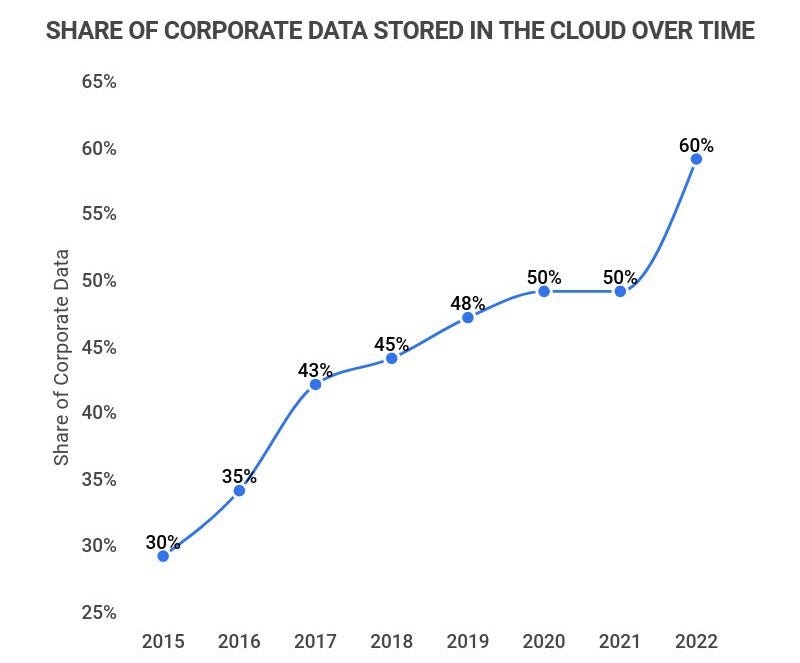Snowflake's Stock Slowdown
The largest software IPO is now facing a big problem...
Programming Note: The newsletter will be off for July 13th, back on July 20th
In the late 1990s, the US carried out its first operation in Iraq. In a series of two campaigns, Operation Desert Shield and Operation Desert Storm, the US ran large bombardment campaigns in Iraq, resulting in the establishment of many US military bases in the Gulf region.
Fast forward 15 years, and the general sentiment around the wars in the Middle East was that it was more than just stopping Saddam Hussein. Even mentions of oil spark memes and jokes about the US government coming to invade or claim whatever it may be.
Oil as a resource of need isn’t much of a problem anymore. We’ve become reliant on our natural gas reserves and the oil supply of our North American neighbors. However, a new oil has emerged. Today’s corporate giants have made it their mission to protect their data collection and usage rights. Check out last week’s post for a gut check on the amount of data that Google holds today.
But it’s not just Google. Practically every company you interact with engages in some form of data collection, whether that means storing information that you exclusively provide or actively mining for your information every time you interact with their platform or other connected services. Beyond that, companies aren’t only fighting regulators but also other competitors to protect the integrity and their right to continue collecting data on their users.
All of this has led to the rise of another industry. Data warehousing and management. Of course, you have your legacy players - the Oracles and IBMs of the world. But then there is Palantir, Informatica, Databricks, and Snowflake - the subject of today’s piece.
Setting The Scene
Snowflake IPO’d on September 16, 2020, as the largest software IPO on the American markets. The stock soared to more than double the IPO price within minutes, closing at $240 on the day of the IPO. In the frothy days of the pandemic, the company’s valuation peaked at $130 billion with price targets much above that.
For all the hoopla, it's worth exploring what the company does. Imagine you’re a large company that hasn’t fully migrated away from your data centers. Maybe you also have a few services on AWS, Google Cloud, and Azure and want some way of connecting all of them.
That’s where Snowflake comes in. Their infrastructure allows firms to consolidate multiple data sources to easily process and visualize data. Snowflake also separates storage and compute, meaning customers have more control over how they want to optimize their costs.
The clear advantages taper from there. Today, the company is struggling to justify its value proposition in the face of competitors and pessimistic market conditions. To add fuel to the fire, Snowflake swapped CEOs earlier this year, moving away from the legendary Frank Slootman towards the more AI-focused Sridhar Ramaswamy, a Google executive. Initial reactions were stark, with the stock dropping more than 20% right after the announcement.
Fortunately, Ramaswamy’s few words over the first two earnings calls have revealed his priorities about the direction of the company.
I’ve been focused on 3 key priorities in my first quarter as CEO: listening to and learning from our customers, driving execution and alignment within our go-to-market teams, and fueling our innovation and product delivery
I apologize for the load of business talk here. Simply put, Sridhar is emphasizing exactly what Snowflake is focusing on now. Sales. Spending all their time and money on customer acquisition. Generally, this is a sign that a company is starting to look a lot more like its competitors, meaning dollars toward sales are more valuable than dollars toward research and development. Let’s test that theory out by seeing how the data warehousing market looks.
The Data Warehousing Market
Outsourcing data to third parties was still nascent in the late 2000s. Numbers were growing, as companies handed off services like photo storage and computing-intensive operations. But alas, the sentiment at the time could best be described as pessimistic.
It could either be a service-outage-type catastrophe or a security-based catastrophe. In either case, it will be big enough. It will be the kind of disaster that makes you say, 'That's why I didn't get involved with the cloud.
Concerns with service capabilities and obvious mistrust of the security provided were the largest friction points for cloud migration. Even in 2015, only 30% of corporate data was stored on the cloud.
Many see Snowflake as the company that pioneered data warehousing on the cloud. The reality is that the market existed before Snowflake. When they launched in July of 2012, Amazon’s Redshift and Google’s BigQuery were already live in some initial form. However, being tied to their respective incumbents limited their capability to offer robust compatibility with other cloud providers. Why would AWS want to allow you to be compatible with Google or Microsoft Cloud?
More than 10 years of runway allowed the players to catch up. As of 2020, Redshift had the largest amount of adopted companies, with Snowflake at third behind BigQuery. Nuances in use cases give each provider a compelling argument to be used over another.
And then there are the disruptors. Palantir, Databricks, Informatica, and other companies have also entered the industry, each with a unique edge. Palantir’s already locked down government contracts, Databricks is making a name for itself in the AI space, and Informatica eases ETL workloads of firms using other data warehousing solutions.
The clear takeaway here is the lack of differentiation moving forward. Within 5 years, each warehousing solution will eventually converge to be the same product with different tech components and pricing. The commoditization of data warehousing could mean one of two things. Either existing large-scale cloud providers win (Amazon, Google, Microsoft) - eating up the competition and creating a feature within a larger suite of products. Or, a true data warehousing company emerges as a victor.
That’s all for this one folks! If you enjoyed this more informational piece on Snowflake and want to know more about data warehousing and cloud computing, hit the like button or drop a comment with your take. If you enjoyed the piece, please feel free to share it with your friends. Reach out to us by replying to this email if you have any insider takes or leave a comment on our Substack page!





